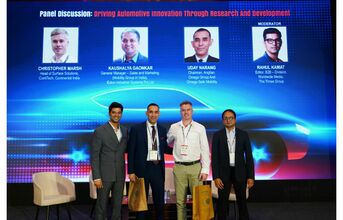
Talking about new processes and innovations that are a game-changer in the economy, Kaushalya shared that there is a knowledge of the automotive, missing in electrical, and knowledge of electrical which is missing in automotive, and Eaton has blended it together. An example of this integration is the development of a resettable fuse for automotive vehicles. In traditional cases, when a fuse burns out, replacement is necessary, but Eaton's innovation allows for a reset.
These technologies are becoming region-agnostic, and in India, there are currently 2,000 to 3,000 individuals engaged in global engineering platforms. The advantage lies in having a robust engineering team that validates the maturity of the technology, making it applicable and promising in the Indian context.
Vs), the key considerations are efficiency and safety. Kaushalya emphasised that a company capable of harmonising these two aspects effectively could potentially be a game-changer in the industry.
Following this, Kamat inquired about advancements in technology or research aimed at reducing the weight of engines, given their significant impact on a car's overall weight, with the goal of enhancing safety and fuel efficiency.
Marsh responded by noting that engines are indeed undergoing a size reduction. Technological evolution is trending towards employing three cylinders and a turbocharger instead of the traditional four cylinders, maintaining the same power output. Regarding batteries, Marsh mentioned that OEMs feel compelled to lighten their vehicles, leading to the removal of certain features. As an example, he cited the removal of a 10-inch screen from a premium vehicle to avoid surpassing a weight threshold that categorises it as a commercial vehicle rather than a passenger vehicle.
Marsh shared a relevant statistic, indicating that for every 10 per cent reduction in a vehicle's weight, there is an associated 5-6 percent increase in its range, translating to improved mileage.
Narang articulated a vision for the future, expressing a dream where the world is devoid of traditional engines. Instead, he envisions a landscape dominated by electric vehicles, hydrogen-powered vehicles, and other advanced technologies for the benefit of future generations. Although he aspires for a country free of traditional engines, he acknowledged that engines would persist, but anticipates a significant reduction in their size within the next 5 to 10 years.
Kaushalya explained that achieving improved efficiency in commercial vehicles involves three key aspects. First, he highlighted the significance of application, emphasising that a low power-to-weight ratio and a smaller engine size result in reduced speed when a truck carries a heavier load. Upgrading to a larger engine enhances both fuel efficiency and speed.
Secondly, Kaushalya pointed out the potential for more power-dense engines, suggesting a focus on increasing power without compromising efficiency.
The third aspect involves the lightweighting of engines, aiming to use alternative and lighter materials. These trends reflect a shift in the commercial vehicle industry towards smaller engine sizes and higher efficiency.
Continuing the discussion, Rahul posed a question about the balance between design, appeal, and practicality when creating sustainable products.
Continue Reading on Page 3


























